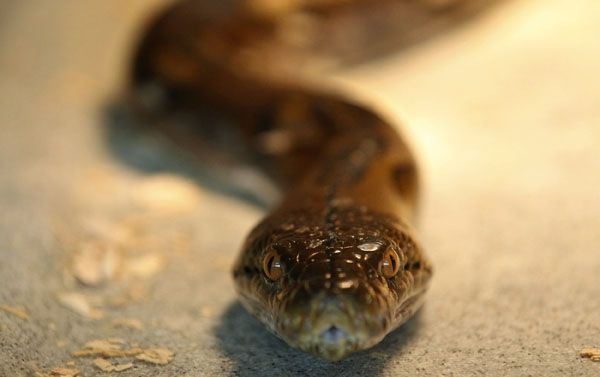Snake Bites Man's Penis: Man From Ghana Rushed To The Hospital After Snake Nibbles His Penis In Public Toilet

People in Africa live side by side with some of the world’s most exotic and sometimes dangerous wildlife, but nothing could have prepared Kwabena Nkrumah for what was waiting at the bottom of a toilet this past Wednesday. After visiting a public restroom in Ghana’s Ashanti region, the 34-year-old porter leaped from his toilet seat when he felt a strange sensation between his legs that turned out to be a snakebite on the tip of his penis.
On Wednesday, Kwabena stopped to relieve himself at a public bathroom in Faaman, a region of Ghana known for its impoverished living conditions, GhanaWeb reported. He was startled after experiencing a sharp pain on his penis so he jumped up to investigate. Lying in the bottom of the toilet was a large, black snake already coiled in its defense position, ready to strike again.
People in the stalls next to Kwabena reported hearing cries for help including “snake, snake, snake” which caused mass hysteria among the restroom crowd. Upon exiting the bathroom, Kwabena told bystanders that a large, black snake had bit him on the tip of the penis and that he was still feeling the pain from the bite. Good Samaritans rushed him to the hospital after he started to shiver and feel dizzy. He was ultimately discharged from the hospital a couple of hours after surviving a literal attack on his manhood.
According to the World Health Organization (WHO), approximately five million people around the world receive a snake bite each year, the majority of which occur in Africa and Southeast Asia. Each year, snakebites result in 2.4 million incidences of envenomation, between 94,000 and 125,000 deaths, and 400,000 major health complications, such as amputations, infections, tetanus, and psychological effects.
Just because Kwabena was discharged less than a day after coming into contact with the snake doesn’t mean the animal was non-venomous. Of the 600 species of venomous snakes, only 50 to 70 percent of bites cause envenomation. When envenomation does occur, snakebite experts recommend completely immobilizing the area of the body that has been affected. After that, it becomes a race against time to administer the appropriate antivenom, the only specific treatment for a snakebite.
Published by Medicaldaily.com



























